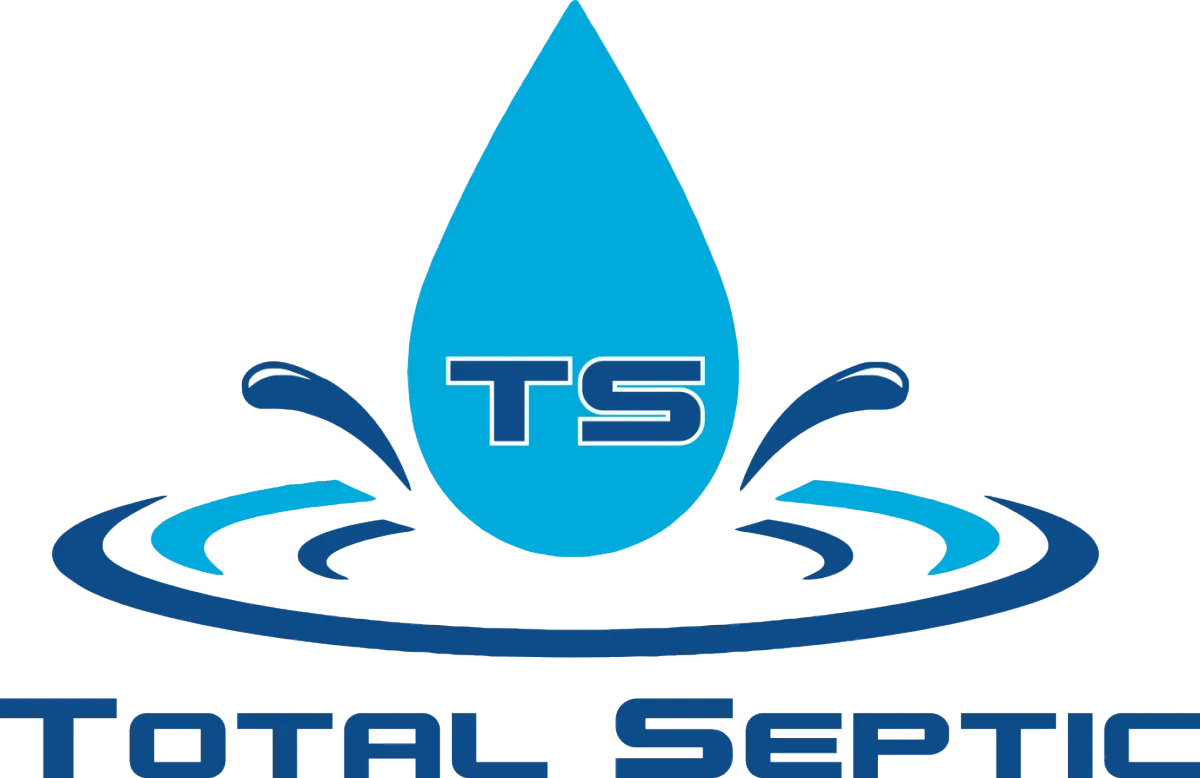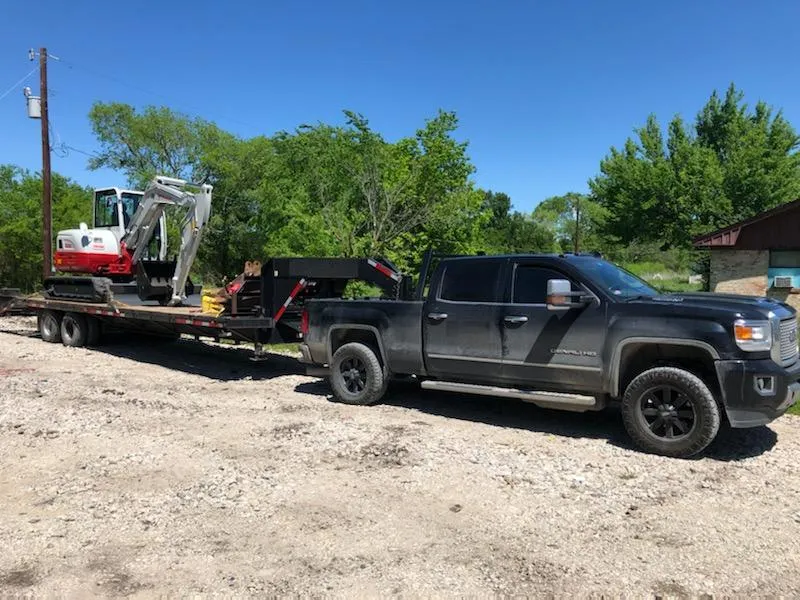
Serving Texas Counties: Collin, Grayson, Dallas, Denton, Rockwall, Fannin and Hunt
Septic Installation near McKinney in Collin County, TX
Total Septic is Committed to superior quality and results!

AVOID COSTLY MISTAKES:
Do NOT hire an excavating contractor without first reading our free guide:
The ULTIMATE Excavation & Septic "Success Guide."

Septic Installation near McKinney in Collin County: What It Really Takes
You live on a beautiful lot in or around McKinney, TX, and you need a wastewater solution that will pass inspection the first time and keep working for decades. That’s what a thoughtful septic installation delivers when it’s engineered for Collin County soils, sized for your household, and built to Texas rules.
How Can We Help?


Benefits of Septic Installation near McKinney in Collin County, Texas
A well-planned system adds lasting value. Modern treatment safeguards groundwater and nearby wells by dispersing cleaner effluent. A right-sized design cuts the risk of backups, odors, soggy yards, and emergency pump-outs. Smart layouts preserve trees and outdoor living areas while leaving space for a reserve field. Finally, documented, code-compliant work smooths appraisals, refinancing, and future sales, giving buyers and lenders confidence in your property.
Why Hiring a Local Septic Installation Pro Matters
Local expertise isn’t a luxury; it’s insurance. Teams that install systems in Collin County every week understand Health Department expectations, typical soil textures from Melissa to Fairview, and how seasonal moisture shifts affect drain field performance. They maintain relationships with soil scientists, pump suppliers, and inspectors, which streamlines scheduling and reduces delays. Most importantly, a seasoned crew will right-size the tank, choose gravity, pressure dosing, or an aerobic unit based on your soil and space, and build for reliable, efficient operation.
The Step-by-Step Process for Septic Installation near McKinney in Collin County, Texas
1) Site conversation and usage goals. You share bedroom counts, water use habits, and future plans like an accessory dwelling or home office. The goal is to size for today and anticipate tomorrow so you don’t outgrow the system.
2) Soil testing and evaluation. A licensed professional performs percolation tests or soil profiling to determine absorption rates, limiting layers, and required separation from groundwater or rock. Findings drive the system type and drain field sizing.
3) System design and estimate. Using the data, the designer specifies tank size, field layout, setbacks, pump specs (if needed), monitoring, and alarms. You receive drawings, scope of work, materials, and transparent pricing with allowances for rock excavation, spoil hauling, or rain delays.
4) Permitting and approval. The package goes to the county for review. Local familiarity prevents paperwork errors that trigger resubmittals. Once approved, materials are ordered and the schedule is set based on weather and crew availability.
5) Excavation and installation. Crews protect utilities, strip topsoil where needed, and excavate to design elevations. Tanks, distribution boxes, chambers or pipe-and-gravel trenches, risers, and inspection ports are installed to spec. Electricians wire control panels and high-water alarms to catch issues early.
6) Backfill, grading, and protection. Trenches are bedded, backfilled, and compacted to avoid settlement. The yard is graded to shed water. Temporary erosion controls protect bare soil during establishment.
7) Start-up, owner training, and inspection. The system is water-tested, settings are verified, and you learn simple rules: no wipes, limit grease, space out laundry, and schedule routine service. The county inspector reviews the work and, once satisfied, closes the permit.
Smart Design Choices for Collin County Homes
Clay subsoils and storm bursts can stress a drain field. That’s why local designs often favor timed dosing, equal distribution, and easy-access risers for fast service. If you plan a pool, workshop, or addition, protect setbacks now and reserve space for the future field. Good design today prevents conflicts tomorrow.
See Our Excavation & Septic Services

✔️ Commercial Excavation
✔️ Residential Excavation
✔️ Demolition
✔️ Dozer work
✔️ Septic inspections
✔️ Septic system pumping
✔️ Septic installs traditional systems
✔️ Septic tanks - aerobic systems
✔️ Septic tanks - Plastic/poly
Quality Services Launched FAST!

✔️ Septic tanks - Concrete
✔️ Sewer repairs
✔️ Trenching
✔️ Utilities Trenching
✔️ Pump Outs Installs
✔️ Maintenance Contracts
What Are You Waiting For?
Permits, Setbacks, and Texas Code Basics
Texas rules set standards that are enforced locally. Expect setbacks from wells, property lines, and waterways; minimum tank sizing by bedroom count; and cover requirements to prevent damage. Aerobic units may require service contracts and periodic reporting. Submitting complete drawings, manufacturer specs, and soil data keeps your permit moving and your installation compliant with the rules that protect neighbors and groundwater across Collin County, TX.
Budget Talk Without the Guesswork
Septic investment varies by soil, system type, depth to rock, and yard access. Transparent estimates break costs into line items: testing, design, permitting, excavation, tank and components, electrical, restoration, and a contingency for unknowns. Ask for options that compare gravity versus pressure dosing versus aerobic treatment, along with lifetime operating costs. A slightly higher upfront spend can reduce maintenance, energy use, and pumping over time.
Maintenance Mindset from Day One
Every system lasts longer with routine care. Commit to regular pump-outs, filter cleaning, and controller checks. Keep deep-rooted trees away from lines, direct roof runoff away from the field, and avoid driving across the drain area. Record service dates and readings like you would for a vehicle. Good habits protect performance, protect warranties, and protect your yard.
Water-Smart Habits for Texas Summers
Hot, dry spells followed by intense rainfall challenge on-site systems. Spread water use across the week, fix leaks quickly, route softener discharge appropriately, and divert gutters away from the field to maintain consistent loading and prevent saturation.
Your Next Step
If you’re exploring Septic Installation near McKinney in Collin County, TX, start with clarity. Gather bedroom counts, a copy of your plat or survey, and any past septic records. Then schedule a site visit and soil evaluation so the design matches your reality. From there, you’ll get a design you understand, a permit path you can see, and an installation date that sticks. The result is simple peace of mind—a code-compliant, efficient system built for the way you live.
Facebook
Google Plus